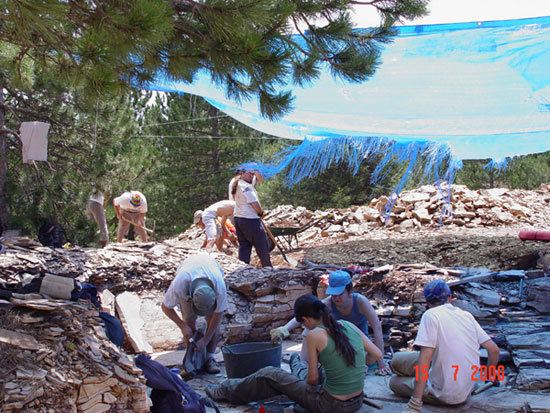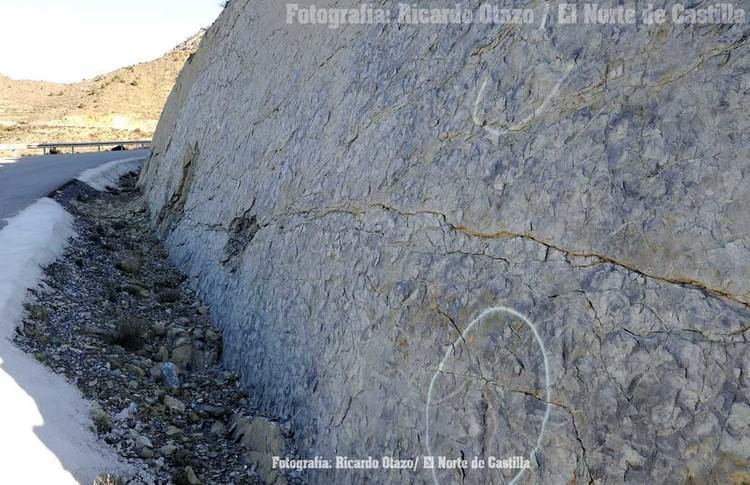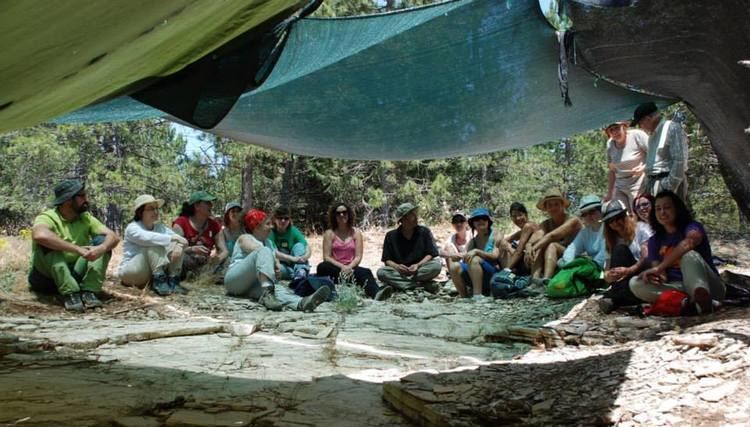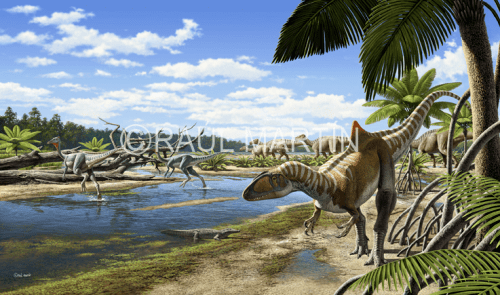 | ||
Las hoyas
Las Hoyas is a Cretaceous Konservat-Lagerstätten located near the city of Cuenca, Spain.
Contents
It is dated as Barremian (early Cretaceous), and is mostly known from its exquisitely preserved dinosaurs, especially enantiornithines.
Taphonomy

As a Konservat-Lagerstätten, the preservation is exceptional. This may be a result of three factors: Microbial mats, Obruption and Stagnation.

Microbial mats may be responsible for the preservation of soft tissue in many fossils from Las Hoyas, like Pelecanimimus' crest. The iron carbonate depositions, a result from bacterial metabolism which covered the dinosaur's crest enhanced the preservation of those soft tissues. Evidence of these mats comes from the studies on microfacies and the fossils themselves.

Obruption is notable in the formation, due to the presence of highly articulated specimens. From actuotaphonomy studies on several different organisms it can be estimated that the burial of most entities was quick. Concornis may have been buried in less than 15 days, after a period of sub-areal exposition.
Paleoenvironement

Las Hoyas was an inland lacustrine environment which presents an important aquatic and terrestrial flora (with many specimens of Charophytes, Montsechia, Weischelia or Frenelopsis) and diverse fauna, with specimens of at least five or six Phyla: Arthropods, Molluscs, Chordata and many vermiform soft bodied animals which might be Nemertines or Annelids.
Among vertebrates the most abundant and diverse group are fish. The presence of mostly articulated skeletons, exceptional preservation of tissue and lack of any other signs of transportation may indicate that these are demic and autochthonous entities (meaning that they lived and died in the same place where they fossilized).
Crocodylomorphs are the most abundant amniotes from Las Hoyas.
Dinosaurs from Las Hoyas (avian and non avian) are unique in many ways. The first ornithomimid dinosaur described in Europe, Pelecanimimus polyodon, shows some characters previously unknown in these dinosaurs which enhanced the knowledge on the evolution of the group, such as a high number of teeth. Concavenator corcovatus presents two unique features: very tall neural spines on the vertebrae near the hip, which look like a hump, and a structure on its forearm, which if homologous to quill knobs would push back the origin of feathers earlier in theropod evolution.
Las Hoyas birds are enantiornithes, the most diverse Cretaceous bird clade, which became extinct at the end of the period. Iberomesornis romerali shows both derived ("avian") and primitive ("dinosaurian") characters. Within the derived characters we can underline the presence of a pygostile, although it is still very large compared to that of modern neornithines and the presence os quilled sternum. Eoalulavis hoyasi shows the first report of an alula or "bastard wing", which means it had a flight manoeuvrability analogous to that of modern birds.
Research
Las Hoyas Formation has been studied for more than two decades by researchers from the Universidad Autónoma de Madrid, the Universidad Complutense de Madrid and the National University of Distance Education, in collaboration with the Museo de las Ciencias de Castilla-La Mancha, which is responsible for the fossil record from the area.
